|
| |
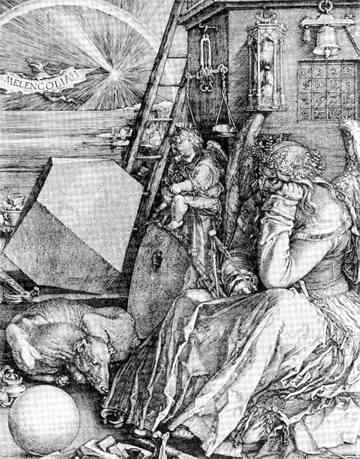
Albrecht Dürer: ‚Melencolia I‘ with a comet, 1514
Campo
del Cielo
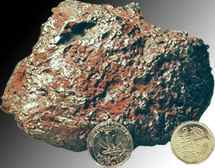
Gran
Chaco Gualamba, Chaco, Argentina
Found 1576
Tkw: >30t
Octahedrite, coarse (3.0mm), with silicate inclusions
IA
(6.62% Ni, 90.0ppm. Ga, 392ppm. Ge, 3.2ppm. Ir)
Campo
del Cielo is one of the earliest historical finds. First mentioned by Hernan
Mexia de Miraval and later on, in 1783, by Don Rubin de Celis, there was a
mighty iron mass of 15t, which the locals referred to as "Field of
Heaven" (in Spanish: Campo del Cielo). - So maybe they were well aware of
its cosmic origins? At the site of the find there is a field of 122 pits and
craters, the largest of which measures 70m across and is 5m deep. Over the last
two centuries, numerous masses, sometimes weighing several tons, were recovered,
so that the total weight is estimated at 30-50t, which confers on Campo del
Cielo the rank of third largest meteorite around, after Hoba and Cape York.
Which means it shouldn't be lacking in any collection! Despite its impressive
Total Known Weight, Campo del Cielo isn't offered that often. This piece isn't
exactly a beauty, but it will make good cutting material, for the rust is only
superficial. (If, on cutting, corrosion should be found to go deeper, I will of
course take the meteorite back.) 0.30$/g.
Rough
specimen
ca. 12.5cm x 10cm x 6cm
2454g
$736.20
Cañon Diablo
 Coconino
County, Arizona, USA Coconino
County, Arizona, USA
Found 1891
Tkw: ~30t
Octahedrite, coarse (2.0mm) IA
(6.98% Ni, 81.8ppm. Ga, 324ppm. Ge, 1.9ppm. Ir)
The
irons of Cañon Diablo are found in a range of 15km around the famous Meteor or
Barringer Crater in Arizona. The Meteor Crater is arguably the most spectacular
and impressive impact crater on earth. It is comparatively young, according to
recent indications some 50 000 years, and only little eroded, thanks to the
favourable geological and climatic conditions. It has a diameter of 1186m, its
depth being 170m. Even though it plays a prominent rôle in the myths of the
local indigenous population, it wasn't mentioned by white folk until 1871, and
it was only around the turn of the century that a post master, by the name of
G.K.Gilbert, started considering it of meteoritical origin. The estimates as to
the impact meteorite vary, depending on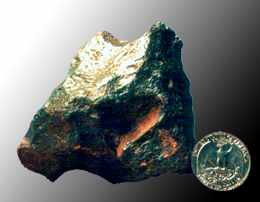 impact angle and speed: impact speed 15-20km/s, mass of the meteorite 150 000 -
5 mio t,
impact angle and speed: impact speed 15-20km/s, mass of the meteorite 150 000 -
5 mio t,
Diameter
of the meteorite 25-30m, impact energy 4,5-17,5 megatons TNT. 11,5t of the
original mass are in meteorite collections (Buchwald), the total finds are
estimated at 30t (Nininger). Today the crater is private property, and meteorite
search forbidden. Still, Cañon Diablo remains available everywhere, and as it
stems from the famous crater, it is highly coveted, especially by beginning
collectors or those who desire to own but one meteorite. This specimen has a
pleasant form and is moderately weathered (it has a natural rusty hole on the
lower side). 0.40$/g.
Individual
ca. 8.2cm x 7cm x 3.5cm
401g $160.40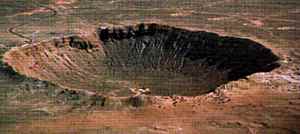 Sold
Sold
Chinga
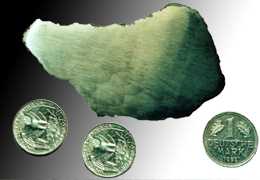 Tanna
Tuva, Turvinskaya, Russia Tanna
Tuva, Turvinskaya, Russia
Found 1913
Tkw: >80kg
Ataxite, Ni-rich IVB-ANOM
(0.181ppm. Ga, 0.082ppm. Ge, 3.6ppm. Ir)
Ataxites
show a very high nickel content - Chinga 16.38%. The beam width of the kamacite
lamellae decreases with the increase of nickel content in the total metal, and
above about 15% Ni content, they disappear altogether, so that there is no more
Widmanstätten pattern present (gr. a taxis = without order). In 1913, in the
Chinga River, several masses of this ataxite were found, with a total known
weight of more than 80kg. For the most part they are heavily rusted and have the
torn appearance characteristic of those of Henbury. Ataxites are very rare among
iron meteorites and therefore the mind boggles at seeing them offered so
cheaply. 1.50/g.
Thick
fullslice with one polished side
ca.
8.5cm x 5cm x 1cm
174g
$261 Sold
Gibeon
 Great
Nama Land, Namibia Great
Nama Land, Namibia
Found 1836
Tkw: >26t
Octahedrite, fine (0.30mm) IVA
(7.68% Ni, 1.97ppm. Ga, 0.111ppm. Ge, 2.4ppm. Ir)
The
earliest tidings of the meteorites of Gibeon were referred in 1838 by the
English army captain and explorer Sir James E. Alexander, who sent a small piece
to Sir John Herschel, the director of the Cape Observatory. In 1856, at the Lion
River, and in 1899 near Bethany, the next specimens were discovered, and soon
the Gibeon meteorites, usually under the denomination "Iron of Mukerop",
found their way into museums all over the world. In 1911, Paul Range, at the
behest of the Imperial Governor in Windhoek, set out to search and buy up all
masses. In total, he collected 37 specimens, weighing 12,5t. Some of these can
be visited in the "Alte Feste" at Windhoek up to this day.
Furthermore, there are 31 pieces placed in Poststraße, to the end and purpose
of bestowing upon the locals the occasion of disrespectfully rubbing their
buttocks against them (cf. photograph).
The
Gibeon strewnfield, with its 390x120km², is the largest in the 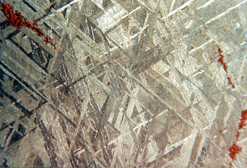 world.
It has by now been combed, without much further yield in recent times; at least
26t were found. Gibeon, due to its accessible price, should by no means be
disregarded: Once polished and etched, it shows an exquisite Widmanstätten
pattern! world.
It has by now been combed, without much further yield in recent times; at least
26t were found. Gibeon, due to its accessible price, should by no means be
disregarded: Once polished and etched, it shows an exquisite Widmanstätten
pattern!
At
present, I have two specimens on offer: G1 is an etched piece, the back shows
the natural surface. It bears a few rust traces, so that, if one should take
offence at these, it could be sanded and etched again some day or other; for
which one would have to invest some $30 to $40. That's why I am offering it at a
reduced price - for etched Gibeons usually cost 1$/g, due to the cut loss of
about 25% and the time-intensive treatment. 0.40$/g.
G2
is an individual, of very beautiful, natural shape, like a modern 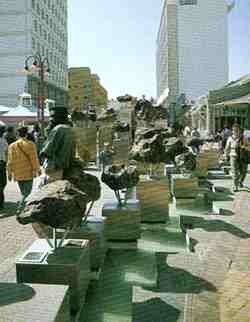 sculpture.
It is of A quality, i.e. optimum condition, without any weathering
traces. 0.30$/g. sculpture.
It is of A quality, i.e. optimum condition, without any weathering
traces. 0.30$/g.
G1
Endcut, etched
ca. 10.7cm x 8.2cm x 2.5cm
705g $282
G2
Individual
ca. 19cm x 11cm x 6.5cm 3265g
$979.50 Sold
Henbury
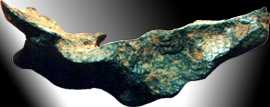 Northern
Territory, Australia Northern
Territory, Australia
Found 1931
Tkw: 1.3t
Octahedrite, medium (0.9mm) IIIA
(7.47% Ni, 17.7ppm. Ga, 33.7ppm. Ge, 13ppm. Ir)
At
some 130km to the Southwest of Alice Springs lies the crater field of Henbury,
which was recognised as meteoritic as early as in the 1930ies. 13 impact and
explosion craters with diameters ranging between 160m and 6m and depths of up to
15m are grouped together in a classic scattering ellipse of 700m length. The
Henbury craters, with their age of 4700 years, rank among the most recent known
impact structures. In their surroundings pretty breccias a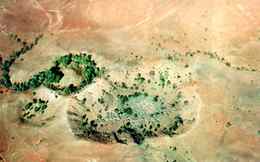 nd
dark-brown nickeliferous silica glass are to be found. As for the meteorites
themselves, they were utterly blown to pieces on impact, which gave them
Henbury's characteristic deformed, torn shape, which can also be seen in this
interesting piece in which the working of strong mechanical forces is manifest.
This item, of about a finger's length, was found in 1971 and bears the number
H342. Today, there are hefty fines on taking meteorites from Henbury. 1$/g. nd
dark-brown nickeliferous silica glass are to be found. As for the meteorites
themselves, they were utterly blown to pieces on impact, which gave them
Henbury's characteristic deformed, torn shape, which can also be seen in this
interesting piece in which the working of strong mechanical forces is manifest.
This item, of about a finger's length, was found in 1971 and bears the number
H342. Today, there are hefty fines on taking meteorites from Henbury. 1$/g.
Individual
ca. 6.5cm x 2.5cm x 1.5cm 51.1g
$51.10 Sold
Morasko
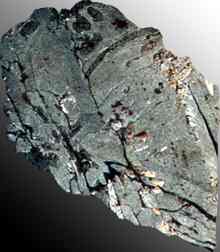 Poznan,
Poland Poznan,
Poland
Found 1914
Tkw: 255kg
Octahedrite, coarse (2.5mm) IA
(6.56% Ni, 98.9ppm. Ga, 496ppm. Ge, 1.0ppm. Ir)
Morasko
has a sad find history: In 1914, after the outbreak of WW1, soldiers, while
digging trenches 10km to the North of Poznan, unearthed an iron lump of 77.5kg.
Over the following decades further pieces were discovered from time to time, but
it wasn't before the late 1950ies that it was thought upon that the ponds and
pits next to the find locations might be of meteoritic rather than of ice-age
origin. The crater field consists of 8 craters, some of which are full of water,
their diameters range between 5m and 110m; further impact holes were probably
ploughed under. The fall of the meteorite will have occurred some 10 000 years
ago.
In
general, the number of iron meteorites found in Europe and Asia, lies below
average. 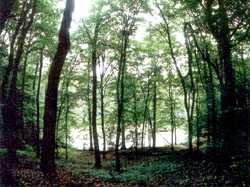 Especially
iron meteorites are supposed to have been used as sources of raw material in
times even before mining and iron smelting were known, as has been well
documented from archaeological finds. Accordingly, in Poland, the museum of
Czestochowa Rakow holds two bracelets made from meteoritic iron, which date back
to the 7th - 5th century B.C. (However, at Ni contents of 12,47% and 18,25%,
they do certainly not consist of Morasko iron). 3.50$/g. Especially
iron meteorites are supposed to have been used as sources of raw material in
times even before mining and iron smelting were known, as has been well
documented from archaeological finds. Accordingly, in Poland, the museum of
Czestochowa Rakow holds two bracelets made from meteoritic iron, which date back
to the 7th - 5th century B.C. (However, at Ni contents of 12,47% and 18,25%,
they do certainly not consist of Morasko iron). 3.50$/g.
Etched
Partslice
ca. 4.3cm x 2.5cm x 0.6cm
42.94g $150.30 Sold
Mundrabilla
 Nullarbor
Plain, Western Australia, Australia Nullarbor
Plain, Western Australia, Australia
Found 1911
Tkw: >18t
Octahedrite, medium (0.6mm), with sulphide and silicate inclusions
IRANOM
(7.72% Ni, 59.5ppm. Ga, 196ppm. Ge, 0.87ppm. Ir)
Between
1911 and 1918 the first three pieces were discovered, but the two main masses,
two fragments that fit together, weren't until 1966. Apparently the weight of
these masses has so far been estimated only, for the references given range
between 10t to 16t for the larger and 4t to 6.1t for the smaller one. The larger
fragment is in Perth, the smaller one was taken to Heidelberg, sliced up and
distributed. In 1979, another two pieces were found, weighing 1.6t altogether.
A 275kg slice of Mundrabilla is a chief showpiece in the permane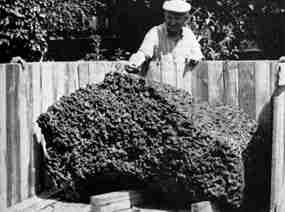 nt
meteorite exhibition of the British Museum of Natural History. The two items
offered, an entire and a pretty little fullslice, stem from the Walter Zeitschel
Meteorite Collection. 2$/g. nt
meteorite exhibition of the British Museum of Natural History. The two items
offered, an entire and a pretty little fullslice, stem from the Walter Zeitschel
Meteorite Collection. 2$/g.
MB1
Individual
ca. 3cm x 2cm x 2.2cm 55g
Sold
MB2
Fullslice, etched
ca. 4cm x 2.7cm x 0.5cm 24.6g
$49.20 Sold
Odessa
(iron)
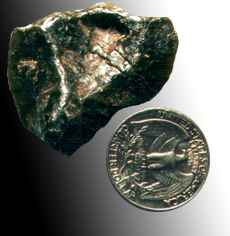 Ector
County, Texas, USA Ector
County, Texas, USA
Found 1922
Tkw: 1t
Octahedrite, coarse (1.7mm) IA
(7.2% Ni, 74.7ppm. Ga, 285ppm. Ge, 2.2ppm. Ir)
The
irons of Odessa are associated with a field of four craters. The main crater
with a diameter of 165m and a depth of 5m is a typical explosion crater and was
recognized as meteoritic back in 1929. At the crater rim and in the
surroundings, many small iron pieces were found, about 1t have been collected so
far, as well as loads and loads of iron shale. The age of the crater field is 50
000 years. The individual offered stems from the Zeitschel Collection. 0.60$/g.
Individual
ca. 4cm x 3.2cm x 1.8cm
67g
$40.20 Sold
Sikhote-Alin
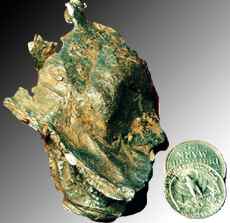 Maritime
Territory, Federated SSR, Russia Maritime
Territory, Federated SSR, Russia
Fell 1947, February 12, 1038 hrs U.T.
Tkw: 23t
Octahedrite, coarsest (9mm) IIB
(5.87% Ni, 51.8ppm. Ga, 161ppm. Ge, 0.029ppm. Ir)
Sikhote-Alin
is the most tremendous fall of an iron meteorite ever to have been watched. A
glaring ball of fire, as bright as the sun and trailing dark clouds of smoke
behind it, was travelling over Eastern Siberia on February 12th, 1947. The
impact had the Taiga tremble, window panes were blown out by the air pressure.
Fortunately the shower descended upon a scarcely populated area and the
strewnfield, at 1 x 2.1km², was comparatively small, so that no one was hurt.
More than 8500 fragments, the largest weighing 1.7t, and with a total weight of
23t, were collected until 1975. Among these fragments both shrapnel-like, torn
iron pieces and intact meteorites with marvellous remaglypts and a blueish-black
fusion crust were found; thanks to the latter Sikhote-Alin has been given the
title "The Queen of Irons". From the differing outward appearances of
the meteorites and the position and size of the 106 craters and holes - the
largest is 28m across and 6m deep - it was possible, for the first time, to
reconstruct the various stages of the explosion and fragmentation of a meteoride
during its transition through the atmosphere. The shrapnel piece offered stems
from the large explosion craters of the front part of the strewnellipse, from
the so-called 4th fragmentation. This metal scrap gives a drastic impression of
the immense force with which the larger fragment must have been torn to pieces
even on impact. Shrapnel pieces are the cheapest material one can get from
Sikhote-Alin, still such a specimen should be present in every collection,
especially as the Sikhote-Alins are sharp-edged and little weathered, as opposed
to, say, the scraps of Chinga and Henbury. 0.45$/g.
Shrapnel-piece
ca. 7.8cm x 6cm x 3cm
320g
$144 Sold
|
![]()